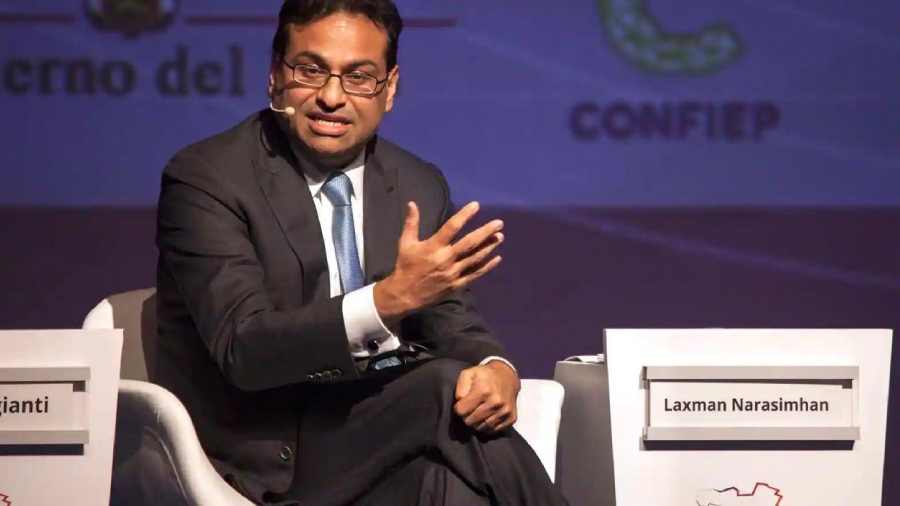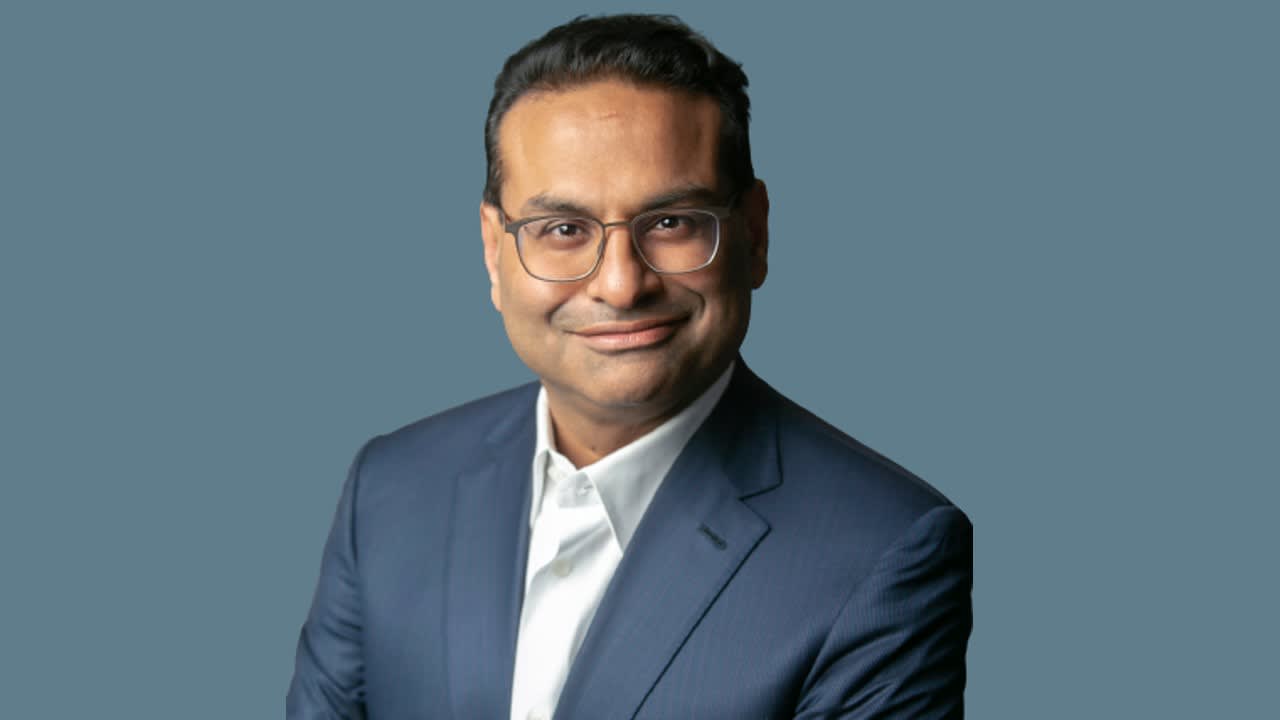Laxman Narasimhan’s Career Journey

Laxman Narasimhan, the current CEO of Starbucks, boasts a remarkable career trajectory marked by strategic leadership and a consistent drive for innovation. His journey has taken him from the bustling world of consumer goods to the global coffee giant, leaving an indelible mark on each organization he has led.
Early Career and Education
Narasimhan’s journey began with a strong academic foundation. He holds a Bachelor of Technology degree in Chemical Engineering from the Indian Institute of Technology, Bombay, followed by an MBA from the Wharton School of the University of Pennsylvania. His early career was marked by a blend of technical and strategic roles. He began his professional journey at McKinsey & Company, a renowned global management consulting firm, where he honed his analytical and problem-solving skills.
Leadership at PepsiCo
Narasimhan’s career took a significant turn when he joined PepsiCo in 2012. He quickly rose through the ranks, demonstrating his strategic acumen and global perspective. His contributions were particularly notable in the company’s global beverage and food businesses. He held several key leadership positions, including:
- Chief Commercial Officer, PepsiCo Global Beverages: In this role, he oversaw the company’s global beverage portfolio, driving growth and innovation across various markets. He was instrumental in expanding PepsiCo’s reach in emerging markets and developing new product lines.
- Chief Executive Officer, PepsiCo Latin America: Narasimhan spearheaded PepsiCo’s operations in Latin America, leading a significant turnaround in the region. His focus on local consumer insights and market-specific strategies proved highly successful.
- Chief Executive Officer, PepsiCo Global Nutrition Group: Narasimhan led the Global Nutrition Group, overseeing a diverse range of food and beverage products. He implemented strategic initiatives to enhance product offerings and expand into new markets, contributing to PepsiCo’s overall growth.
Narasimhan’s tenure at PepsiCo was marked by significant achievements, including:
- Increased Revenue and Market Share: His leadership contributed to substantial growth in revenue and market share for PepsiCo’s global beverage and food businesses. He spearheaded initiatives to expand into new markets, enhance product offerings, and optimize supply chains.
- Innovation and Product Development: Narasimhan fostered a culture of innovation at PepsiCo, leading the development of new product lines and packaging formats. He emphasized consumer insights and market trends to create products that resonated with global audiences.
- Strategic Partnerships and Acquisitions: Narasimhan played a key role in establishing strategic partnerships and acquiring businesses that strengthened PepsiCo’s global presence. He recognized the value of collaborating with other companies to expand market reach and diversify product offerings.
Transition to Starbucks
In 2021, Narasimhan made a significant career move, joining Starbucks as Chief Operating Officer. He was tasked with overseeing the company’s global operations, focusing on key areas such as customer experience, digital transformation, and operational efficiency. His appointment marked a strategic shift for Starbucks, as the company sought to address evolving consumer preferences and navigate the complexities of the global coffee market.
Narasimhan’s Leadership Style and Strategies

Laxman Narasimhan, the current CEO of Starbucks, brings a unique blend of experience and vision to the coffee giant. His leadership style, honed through years in the fast-moving consumer goods (FMCG) industry, stands out from his predecessors, shaping a new direction for Starbucks.
Narasimhan’s Leadership Style
Narasimhan’s leadership style is characterized by a data-driven approach, a focus on operational efficiency, and a commitment to innovation. He emphasizes a collaborative and transparent leadership style, engaging with employees and partners at all levels. He has been described as a “transformational leader” who is focused on driving growth and profitability while maintaining a strong commitment to the Starbucks brand and its values.
Comparison with Previous CEOs, Ceo laxman narasimhan
Narasimhan’s leadership style contrasts with those of his predecessors in several ways. Howard Schultz, the company’s founder and former CEO, was known for his charismatic and visionary leadership, focusing on building the Starbucks brand and its unique culture. His leadership style was more emotionally driven, emphasizing the importance of the customer experience and the “Starbucks experience.” His successor, Kevin Johnson, brought a more analytical and data-driven approach, focusing on operational efficiency and digital innovation. Narasimhan, however, combines these approaches, bringing a blend of strategic vision, operational expertise, and a focus on innovation.
Strategic Priorities for Starbucks
Narasimhan’s strategic priorities for Starbucks are centered around driving growth, enhancing the customer experience, and building a more sustainable and inclusive company.
Key Initiatives and Goals
- Growth and Expansion: Narasimhan aims to expand Starbucks’ global footprint, focusing on emerging markets with significant growth potential. This includes expanding into new markets, opening more stores, and developing new products and services tailored to local preferences.
- Digital Transformation: Narasimhan is committed to further enhancing Starbucks’ digital capabilities, including its mobile ordering and payment systems, loyalty programs, and personalized recommendations. This includes investing in technology to improve the customer experience and drive sales.
- Sustainability: Narasimhan has Artikeld ambitious sustainability goals for Starbucks, including reducing its environmental footprint, promoting ethical sourcing practices, and empowering its employees and communities. This includes a commitment to reducing carbon emissions, sourcing ethically sourced coffee, and promoting diversity and inclusion within the company.
Innovation and Growth
Narasimhan has Artikeld a vision for Starbucks that emphasizes innovation and growth. This includes developing new products and services, expanding into new markets, and enhancing the customer experience through technology and personalization.
Key Plans
- New Product Development: Narasimhan has stated his commitment to developing new products and services that cater to evolving consumer preferences. This includes exploring new coffee blends, beverages, and food options, as well as expanding into new categories like plant-based alternatives and ready-to-drink beverages.
- Market Expansion: Narasimhan is focused on expanding Starbucks’ global presence, particularly in emerging markets with significant growth potential. This includes opening new stores in Asia, Africa, and Latin America, as well as exploring strategic partnerships and acquisitions to accelerate growth.
- Customer Experience Enhancement: Narasimhan is committed to enhancing the customer experience through technology, personalization, and convenience. This includes further developing Starbucks’ mobile ordering and payment systems, loyalty programs, and personalized recommendations, as well as exploring new ways to connect with customers and create a more seamless experience.
Sustainability at Starbucks
Narasimhan has emphasized the importance of sustainability as a core element of Starbucks’ long-term strategy. He has Artikeld ambitious goals for reducing the company’s environmental footprint, promoting ethical sourcing practices, and empowering employees and communities.
Key Plans
- Environmental Sustainability: Narasimhan has set ambitious goals for reducing Starbucks’ carbon emissions, including a commitment to achieving net-zero emissions by 2050. This includes investing in renewable energy sources, reducing waste, and improving energy efficiency in its stores and operations.
- Ethical Sourcing: Narasimhan is committed to promoting ethical sourcing practices for coffee and other ingredients. This includes working with farmers to improve their livelihoods, promoting sustainable farming practices, and ensuring that all coffee beans are sourced ethically and responsibly.
- Community Engagement: Narasimhan has Artikeld a vision for Starbucks to be a more engaged and inclusive member of its communities. This includes supporting local communities through programs that promote education, economic empowerment, and social justice.
Impact of Narasimhan’s Leadership on Starbucks: Ceo Laxman Narasimhan

Narasimhan’s leadership has ushered in a new era for Starbucks, marked by a strategic focus on innovation, operational efficiency, and customer experience. His vision has aimed to revitalize the brand, enhance financial performance, and navigate the evolving landscape of the coffee industry.
Financial Performance
Narasimhan’s leadership has brought about significant improvements in Starbucks’ financial performance. Since his appointment, the company has consistently exceeded earnings expectations, driven by factors such as:
- Price increases: Starbucks has implemented strategic price increases, reflecting the rising costs of raw materials and labor. This strategy has boosted revenue, but it has also raised concerns about affordability for some customers.
- Focus on digital initiatives: Narasimhan has accelerated Starbucks’ digital transformation, investing in mobile ordering, delivery services, and personalized rewards programs. These initiatives have enhanced customer convenience and boosted sales.
- Cost optimization: Narasimhan has implemented measures to streamline operations and reduce expenses, including cost-cutting initiatives and supply chain optimization. This has improved profitability and efficiency.
Brand Image
Narasimhan’s leadership has had a mixed impact on Starbucks’ brand image. While he has focused on enhancing customer experience and promoting innovation, some challenges have emerged:
- Unionization efforts: Starbucks has faced increasing unionization efforts from its employees, leading to labor disputes and negative media coverage. This has tarnished the brand’s image among some consumers.
- Focus on profitability: Some critics argue that Narasimhan’s focus on profitability has led to a decline in the company’s focus on its social responsibility initiatives. This has raised concerns about Starbucks’ commitment to ethical sourcing and employee well-being.
- Competition: The coffee industry is becoming increasingly competitive, with new entrants and established players vying for market share. Narasimhan’s strategies to maintain Starbucks’ market leadership have been met with mixed results.
Challenges and Opportunities
Narasimhan faces a number of challenges and opportunities in leading Starbucks:
- Navigating economic headwinds: The global economy is facing significant challenges, including inflation, rising interest rates, and geopolitical uncertainty. These factors could impact consumer spending and Starbucks’ financial performance.
- Maintaining customer loyalty: Starbucks faces intense competition from other coffee chains and independent cafes. It needs to continue innovating and enhancing its customer experience to maintain its loyal customer base.
- Sustainability and social responsibility: Consumers are increasingly demanding that companies prioritize sustainability and social responsibility. Starbucks needs to demonstrate its commitment to these values to maintain a positive brand image.
Evolving Landscape of the Coffee Industry
The coffee industry is undergoing significant changes, driven by factors such as:
- Shifting consumer preferences: Consumers are increasingly seeking specialty coffee, cold brew, and plant-based options. Starbucks needs to adapt its menu and offerings to meet these evolving preferences.
- Growth of the at-home coffee market: The rise of at-home coffee brewing has led to increased competition for Starbucks. The company needs to find ways to differentiate itself and attract customers to its stores.
- Technological advancements: Technological advancements are transforming the coffee industry, with innovations in brewing methods, delivery services, and customer engagement. Starbucks needs to embrace these advancements to stay competitive.
Narasimhan’s Strategies
Narasimhan has implemented a number of strategies to navigate the evolving coffee industry, including:
- Expanding its product offerings: Starbucks has introduced new products, such as cold brew, nitro cold brew, and plant-based options, to cater to evolving consumer preferences.
- Investing in digital initiatives: Narasimhan has accelerated Starbucks’ digital transformation, investing in mobile ordering, delivery services, and personalized rewards programs.
- Focusing on customer experience: Starbucks is investing in its stores and employees to enhance the customer experience, including providing personalized service and creating a welcoming atmosphere.
Industry Perspectives
Industry experts and analysts have mixed opinions on Narasimhan’s performance as Starbucks CEO. Some believe that he has made significant progress in improving the company’s financial performance and navigating the evolving coffee industry. Others argue that he has not done enough to address the challenges facing Starbucks, such as unionization efforts and competition.
Ceo laxman narasimhan – Laxman Narasimhan, the new CEO of Starbucks, faces a daunting task in revitalizing the coffee giant. He’s no stranger to navigating complex challenges, having previously led PepsiCo’s global beverage business. Narasimhan’s experience echoes that of Brian Nichols , the former CEO of Clorox, who steered the company through a period of significant change.
Both leaders, with their focus on innovation and strategic vision, hold the potential to shape their respective companies’ futures in a rapidly evolving marketplace.
Laxman Narasimhan, the CEO of Starbucks, navigates the complexities of the global coffee industry with a keen eye for detail and a commitment to innovation. His leadership style echoes the visionary approach of Brian Niccol, the director of films like “Gattaca” and “In Time,” as seen in brian niccol wiki.
Both leaders embrace a forward-thinking mindset, shaping their respective industries with a blend of creativity and strategic planning.
